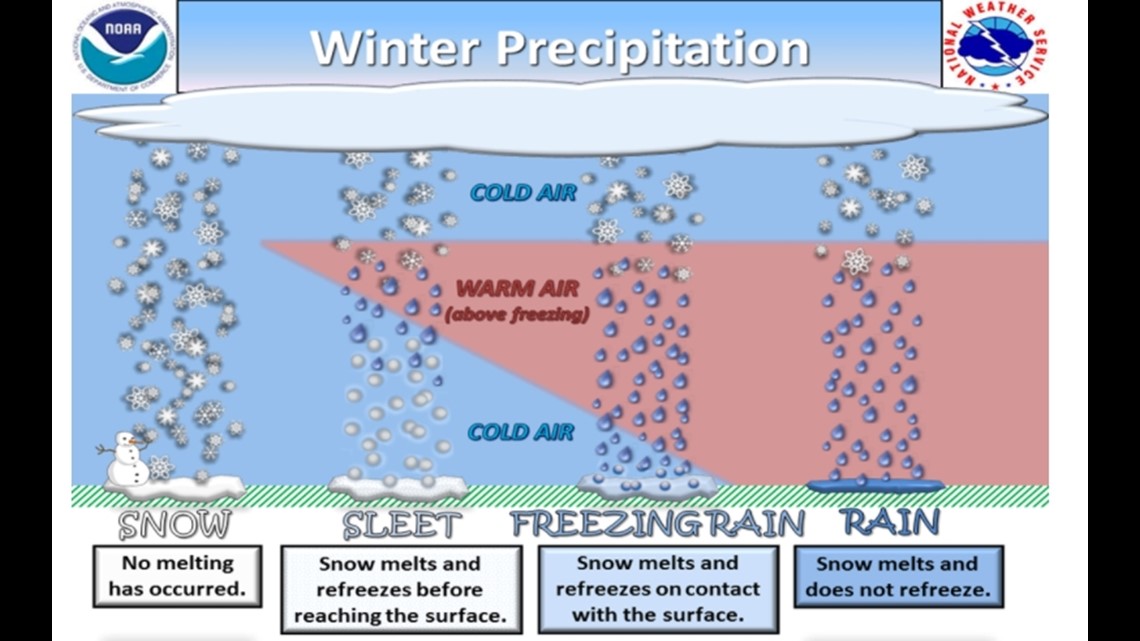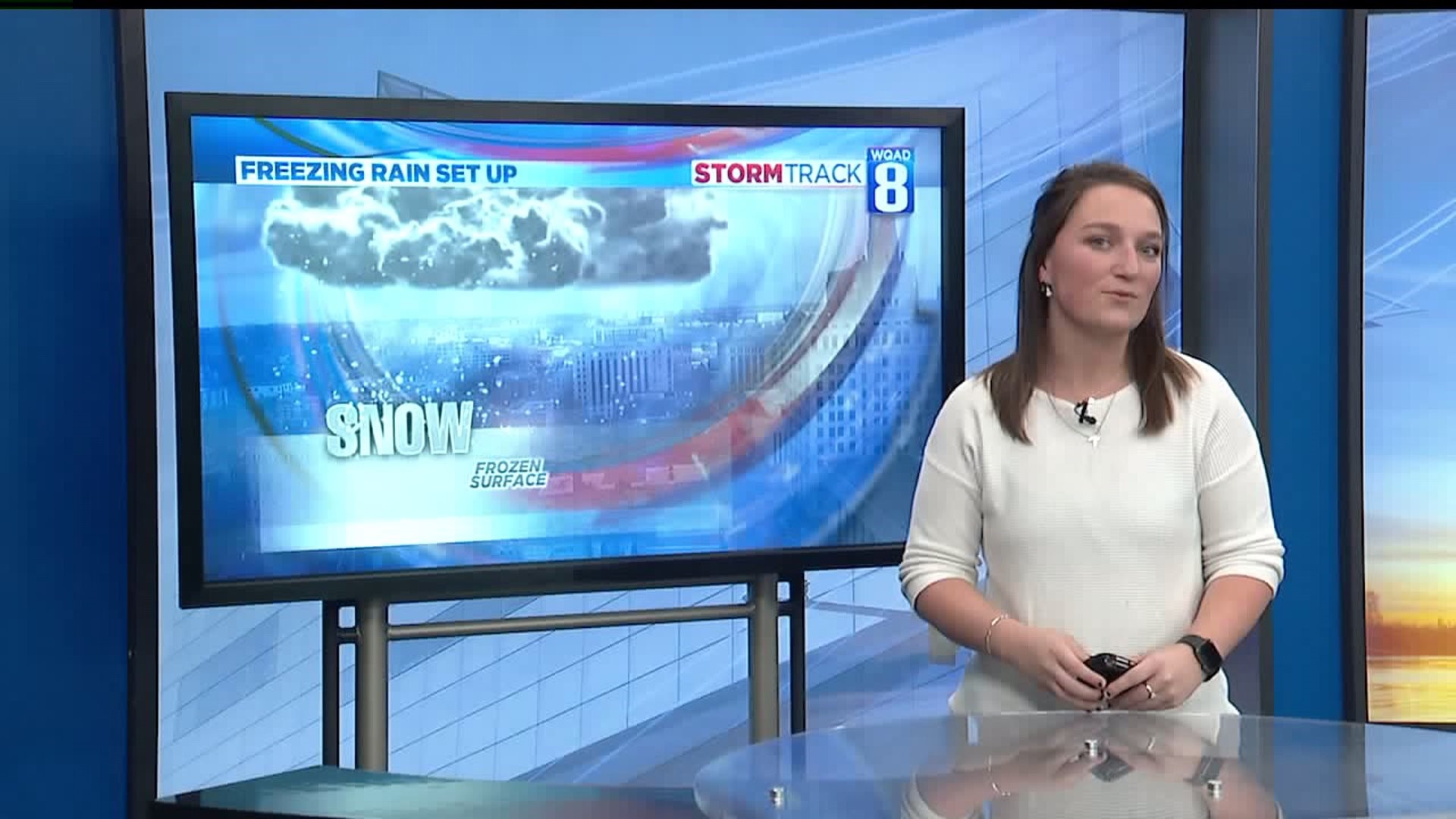MOLINE, Ill. — Editor's Note: The video shown above is from a newscast on Jan. 9, 2020.
Sleet
Sleet occurs when snowflakes partially melt as they fall through a shallow layer of warm air. As the flakes continue to fall, they begin to refreeze when they reach cold air — temperatures must be below freezing (32 degrees Fahrenheit) for this occur.
It also must be below freezing at the surface for them to remain frozen. Once the frozen rain drops reach the ground, they bounce on impact. Sleet can accumulate on the ground just like snow, as long as those conditions continue.
Tuesday morning, we had a phenomenon in the Quad Cities — thundersleet.
Thundersleet occurs in the winter when storms develop along a warm front. Warm air goes over cold air because it is less dense and fuels thunderstorms.
Updrafts occur during this process, creating lightning. Thunder occurs as a result of lightning because it is caused by the rapid air expansion surrounding the path of a lightning bolt.
As precipitation begins to fall, it melts in the warm air and then refreezes once it gets to the cold, below-freezing air beneath it.
It is also cold at the surface, so it remains frozen as bounce on impact.
Freezing Rain
Freezing rain follows a similar path as sleet.
But, as snowflakes fall into warmer air they melt completely. As they continue to fall through the sky and into colder air the flakes do not have enough time to refreeze, unlike sleet, before getting to the surface. At this point, they are supercooled which means the liquid is cooled to below the freezing point. There is not any solidification due to the absence of a nucleus or seed crystal.
Therefore, once it hits the surface it instantly refreezes upon contact that is below freezing, so it must be below freezing at the surface (the ground) in order for this to occur.
Once this occurs, it creates a glaze of ice on whatever surface it comes in contact with that’s below freezing temperature. Just like sleet, it can accumulate and cause an ice storm.



